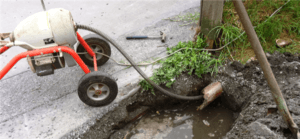What happens in the early days after the installation of a new underground drainage system is crucial for the proper functioning of the network for years to come. The soil that surrounds and covers the drains will still be loose. You must let the passage of time and the rain do their work so that the soil settles naturally. Do not use any material to compact the soil that covers the drains, as strong pressure exerted on loose soil can damage the drains and cause them to sag. Minimize traffic in the field for as long as possible. During the first year if possible run perpendicular to the drainage pipes or at least place the wheels on either side of the pipes if it is necessary to run over them. The Blocked Drains Kent services are the best options there.

Understand the Network Map Thoroughly
Using the network map as a guide, find and inspect all discharge outlets and surface water inlets and mark their location so that they can be located during nutrient applications and maintenance operations. Use for marking durable, easy to spot signposts over crops and tall grass. Ensure the quality of workmanship, given the shortness of the warranty period, which is generally one year following installation. Make sure all surface water inlets are fitted with a screen or rodent guard to prevent entry of garbage and debris into the pipes.
Installing a Rodent Screen
Be sure to install a rodent screen or device on all outlets to prevent burrowing animals such as rodents, muskrats, rabbits, hares and foxes from entering the system. Inspect the mouths of landfills for damage caused by burrowing animals. if there are any signs of their presence, do what is necessary to ensure that these unwanted people are legally removed.
Discharge mouth with large rodent proof screen.
To minimize damage from ice and sedimentation, ensure that the underside of the outlet pipes is at least 300 mm (12 in) above the normal water level of the channel or stream. Receiving water, otherwise the discharge outlets may require more maintenance. During the first year, sediment may accumulate in the outlet due to soil compaction. Under normal conditions, the effluent exiting the outlet should be free of sediment and debris.
Confirm contractor installation of rigid, outlet pipe. Regular plastic corrugated pipe is not suitable as an outlet pipe, as it may be damaged. The outlet pipe should be durable enough to withstand weathering, crushing, and damage from animals, ice, or fire. It should extend far enough into the ditch to prevent runoff from eroding the banks. Water from an outlet can erode the drainage channel or receiving natural watercourse. To prevent this from happening, check if the contractor has installed sufficient erosion protection.
Routine inspection and maintenance
It is important that, throughout its useful life, the drainage system is subject to periodic inspections and maintenance. Spring, late fall and after a heavy rain event are the best times to inspect the network, as the soil is soaked with water and water is flowing through the drainage pipes. By correcting any anomalies without delay, we ensure that the network is still in good condition and we avoid the appearance of more serious problems.

